Lexmark X3480 Multi-Function Printer Review
Lexmark X3480 Multi-Function Printer
The X3480 has more features than some of Lexmark's cheaper multi-function printers. Is it worth the extra?
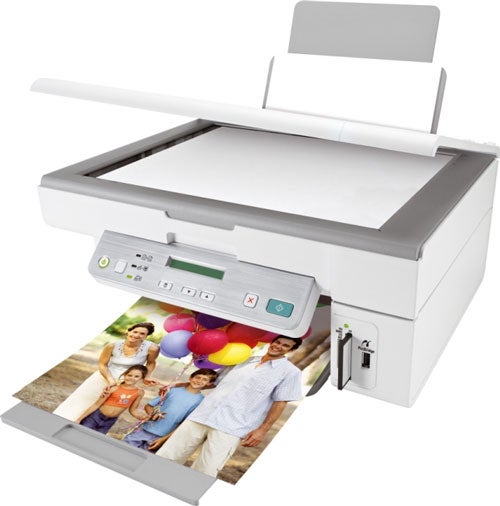
Verdict
Key Specifications
- Review Price: £100.00
Some people might think Lexmark makes too many all-in-one devices for its own good. It currently has 14 showing on its web site under Home Products and while some of these may be end-of-life machines, it does makes choices in this crowded market trickier.
The X3480 employs a very similar design to the X2470, reviewed recently, though with a couple of important extras. The square-cut block with the cutaway corner now has a small sloping control panel projecting from its front and a series of slots and sockets at the right for plugging in cards and cameras.
Three memory card slots provide for all the major types, including xD and Microdrive. There’s also a PictBridge socket to connect a compatible camera and this is probably a better option than using cards, as you can use your camera’s display to select images.
Printing from a memory card is a bit tricky without an LCD monitor, though Lexmark makes the best of it by printing a proof sheet, where you can select images, number and size of prints and the type of paper, by filling in little circles and scanning. Instructions appear on the LCD strip and the process is pretty straightforward, if a bit wasteful of ink.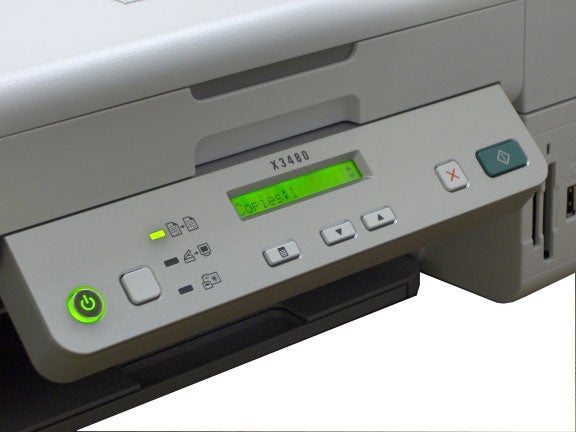
Paper follows a very conventional path, from a near vertical tray at the rear to a pull-out and slightly flimsy one at the front. Sockets at the back accommodate a power lead and a USB 2.0 cable, the only data connection on the X3480.
Lift the main body of the scanner section of the machine up and the cartridge holder moves to the centre of the carriage, so you can slip in the single, No. 2, cartridge. According to Lexmark, this cartridge differs from the No. 1 only in its physical shape, offering the same head architecture and capacity.
There’s a useful bundle of software with the machine, including OCR for recognising scanned text, and a simple photo editor for tidying up your images. There’s also straightforward document management and a fax applet – it all installs painlessly.
Lexmark quotes ‘up to 17 pages per minute’ from the X3480 but you’re unlikely ever to get close to this. Although we managed to better 17ppm by printing a two-line text document in Quick Print mode (and excluding processing time), Quick Print produces bluey-green text, with obvious kinks in the characters, and is really only suitable for personal drafts. Printing a typical five-page, formatted document in normal mode (including processing time) gives a real-world print speed of 2.2ppm.
Our mixed text and graphics print took two minutes 29 seconds to complete and a 15 x 10cm photo print in best quality took 3:29 from a PC or around 4:30 from a PictBridge camera and a memory card. So, no Lamborghini Murciélago – but what about print quality?
Lexmark has certainly improved on the original output quality from its three-colour ink technology. Without a separate black ink, the trick is to mix the other three to get a recognisable black. This machine does a fair job as long as you print in normal mode – draft mode produces a sort of bluey grey. You also get this colour if you photocopy a printout from the machine on it.
Graphics output and colours are generally pretty good, though we noticed some slight white banding in blocks of colour. Photo prints are reasonable, though there is some visible dithering, even in high-quality print mode and on Lexmark’s own glossy photo paper.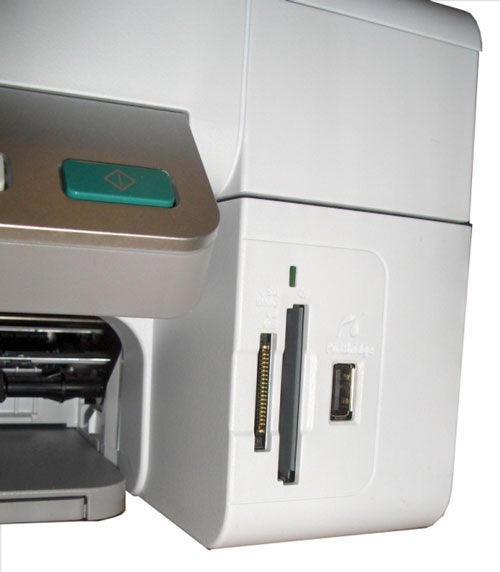
The No. 2 cartridge in the X3480 is rated at 165 black text pages, or 200 in colour. We saw slightly more than these figures under test, with 203 black and 217 colour.
Working out the costs is very straightforward; just divide the number of prints by the cost of the single cartridge. However, overall page costs depend heavily on the prices you can find for the cartridge and, in the case of photo prints, corresponding photo paper. We found a special deal at www.lexmarkonline.co.uk which gives you 50 sheets of A4 glossy photo paper for £6.94, including VAT – a very good deal.
This gives a cost per page for text on plain paper of 7.86p and for a photo print of 23.4p. The text cost is comparatively high, but the colour photo cost is only a little higher than from its major competitors.
”’Verdict”’
As the price of Lexmark’s budget All-in-One machines creeps up, with the addition of new features such as the card and camera readers on this X3480, they come into direct competition with other makes. At £100, the price PC World and Currys are charging for the X3480, there are models from Canon (Pixma MP500), Epson (https://www.trustedreviews.com/article.aspx?art=2263 Stylus Photo RX520) and HP (Photosmart C4180), which all give this device more than a run for its money.
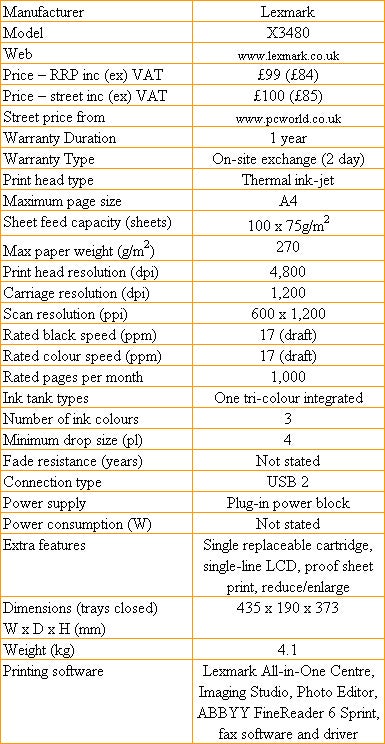
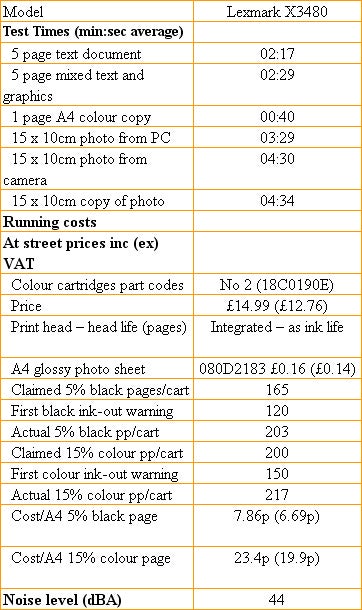
Trusted Score
Score in detail
-
Print Speed 6
-
Features 7
-
Value 6
-
Print Quality 6

